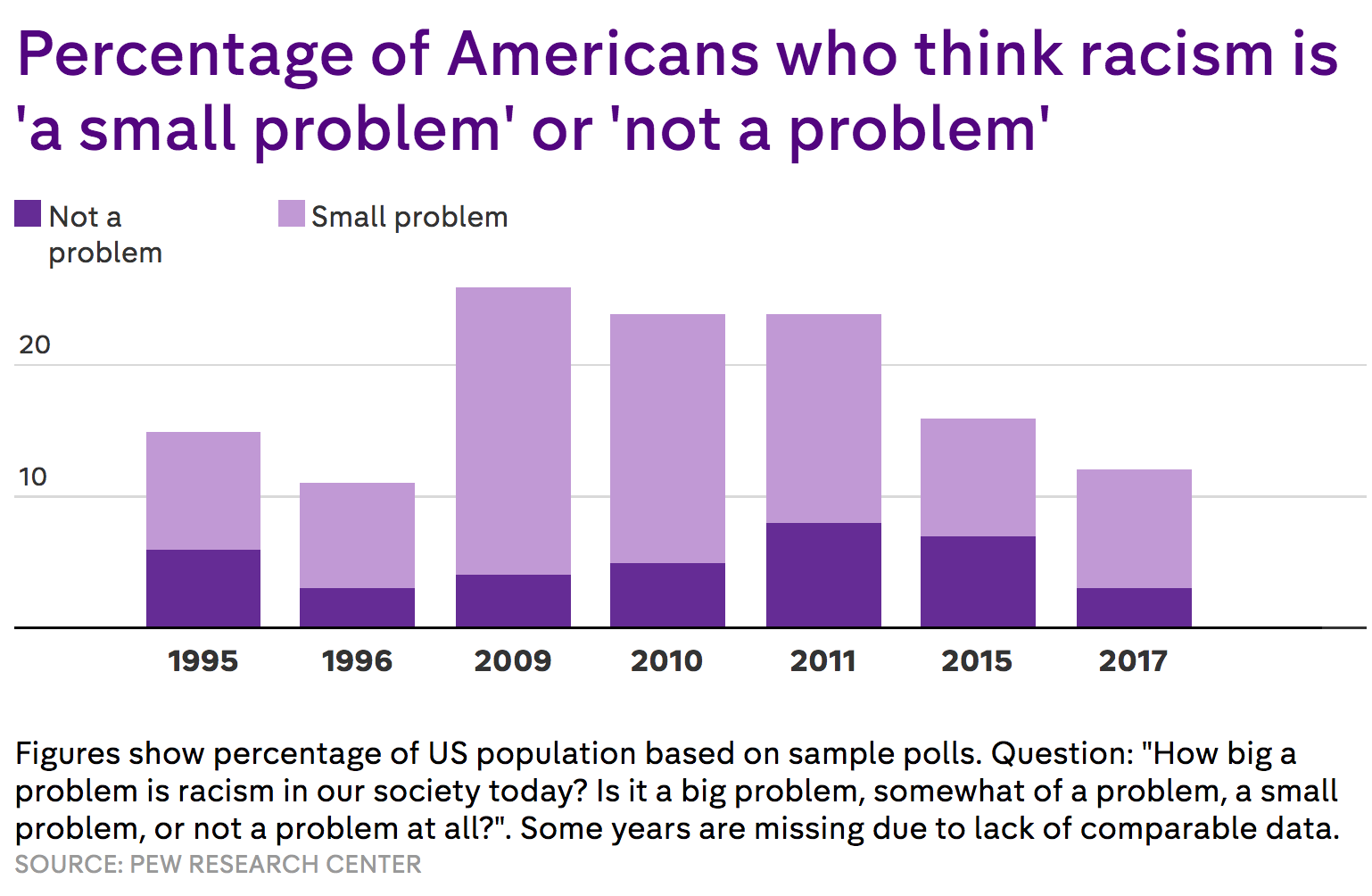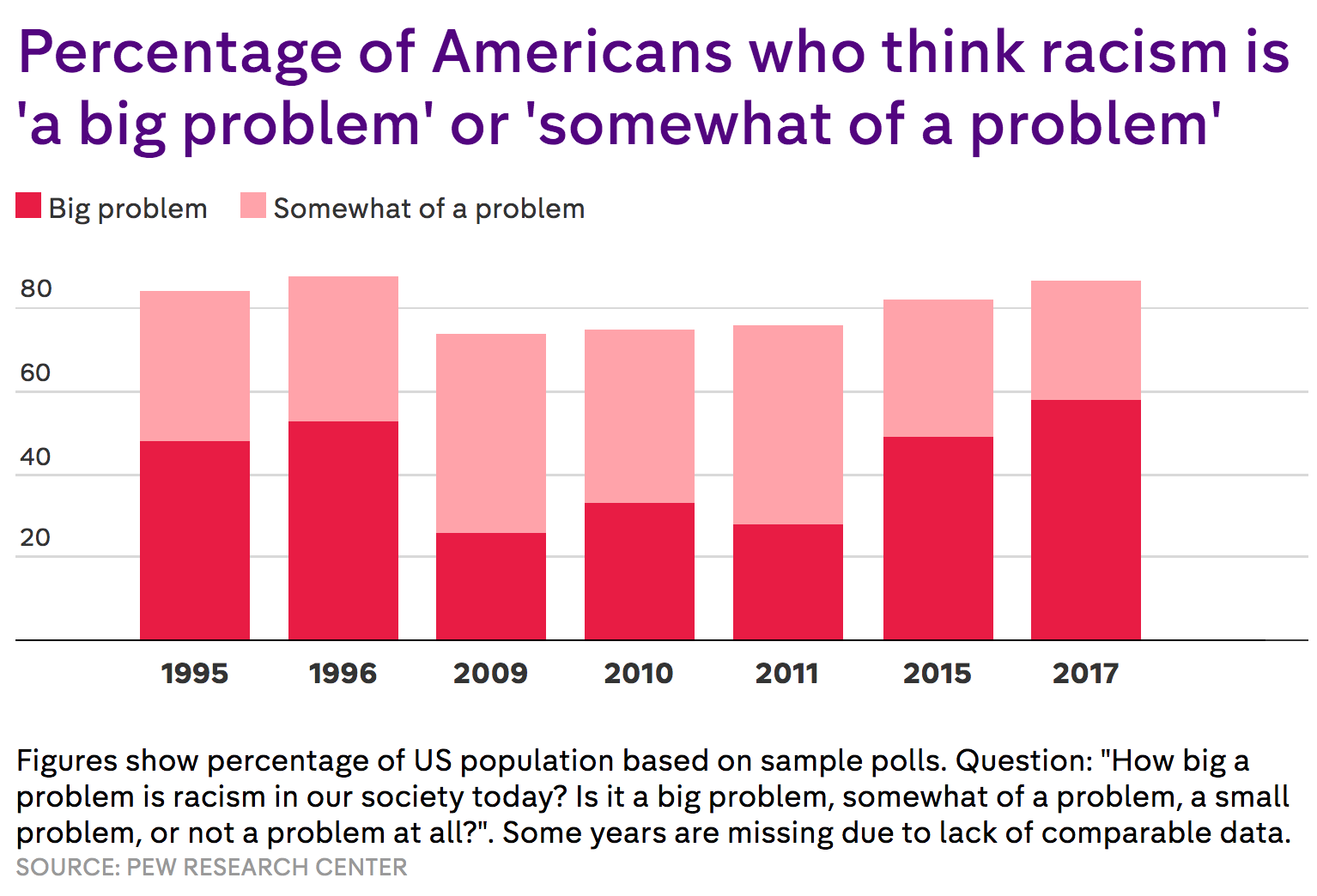The following are some common examples of excuses I have heard or seen for being a casual observer of racism and other discrimination: as a person who has never experienced slavery, I don’t have the emotional range to sympathize with enslaved people or even their descendants. I will never be prejudiced against in ways that they have experienced their entire lives, so how can I possibly relate? Oh, that was a long time ago. I don’t care because I don’t know…
Logic supports these statements for many people, though our capacity for empathy should argue against it. During Dr. Adams’ lecture I took special note when she said, “empathy is so hard to find these days.” That simple statement partially answered a much bigger question I have been having in regards to this class. That is, why does it take so much work to try to undo casual discrimination?

When you look at this graph you probably are pleased that the percentage of Americans who think racism is not a problem has consistently been under 10% for the last 20+ years. However, when we take into account that 10% is TENS OF MILLIONS of people, that number is no longer something to be especially proud of. Additionally, 10-20% of people think that racism is only a small problem. I would now like to insert a somewhat flippant news article listing the “top” racist moments in 2018 for more the purpose of highlighting that although the article lists only 29 incidences, these were only the ones to go viral. I surmise from this data that there are millions of people who don’t care about discrimination and definitely are not going to try to change it.

I would say that one of the biggest problems with this graph is that it is not followed up by a statement or display of how Americans who see racism as “somewhat of a problem” or “a big problem” contributed to the decline of such a problem. I think that visual would be astounding to many. Along that line, I think that is one of the reasons Prince’s artwork is so impactful. That is, it sees a problem, calls out said problem, and then attempts to educate others on the topic to enact change in a larger community. One of my favorite examples of this is the piece “Katrina’s Veil: Veil Stand at the Gretna Bridge.” When families were looking to flee Hurricane Katrina, they were stopped by armed sheriffs. Despite any common sense reasoning for the hold-up, city officials issued a distinctly cold message when they chose to fire weapons toward the crowd. From Prince’s iconic horsemen pressuring the use of violence to the middle figure’s wide-spread arms in a universal sign of non-violence as he tries to pass by with his family, Prince educates his audience of this story through artistic detail. The scene conjures up empathy even if one doesn’t know the origin of the piece, but once one does, it only adds to its effect.
Apathy is a huge problem in society and it has been for a long time. If we want to change something, we need to take the first step by changing ourselves and then help others see why they should make a change too. When we allow ourselves to empathize, the personal interest creates a bond to another human being. Caring about others is one of the most simple things we can do to make the world a better place. So let’s aim for empathy as the default and actively reject casual discrimination.
